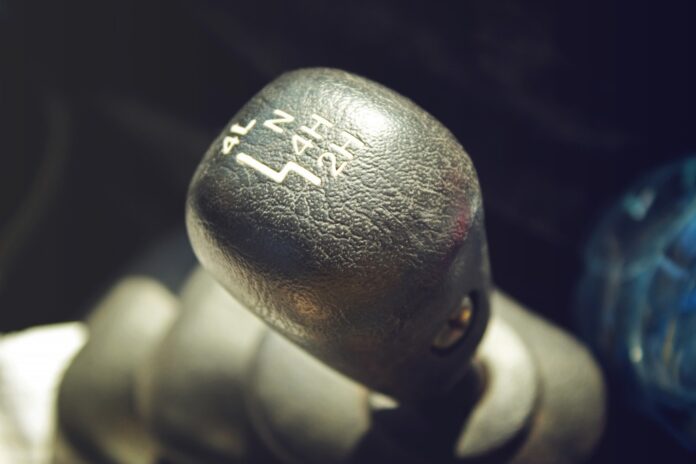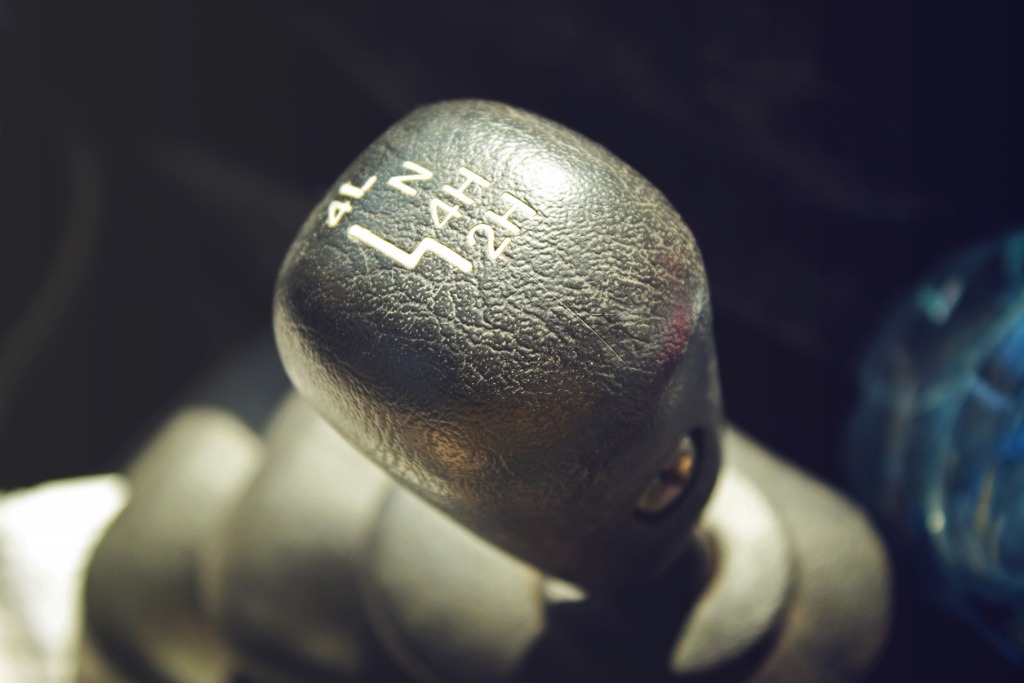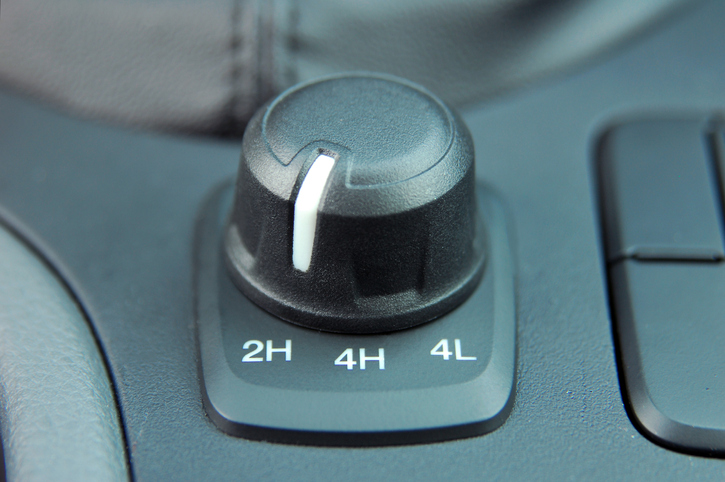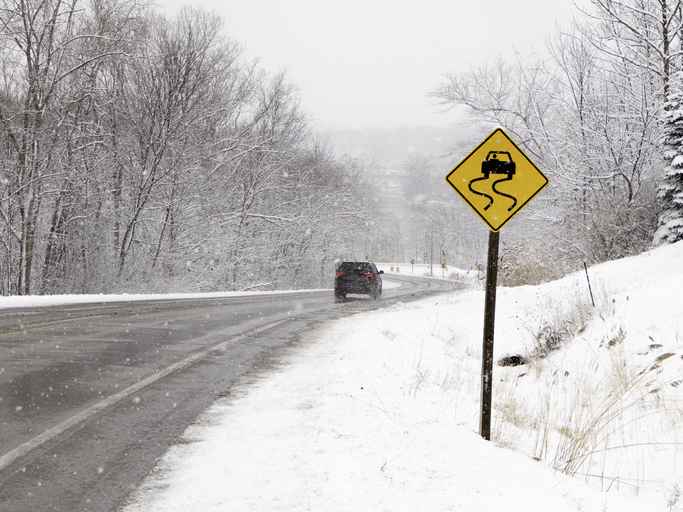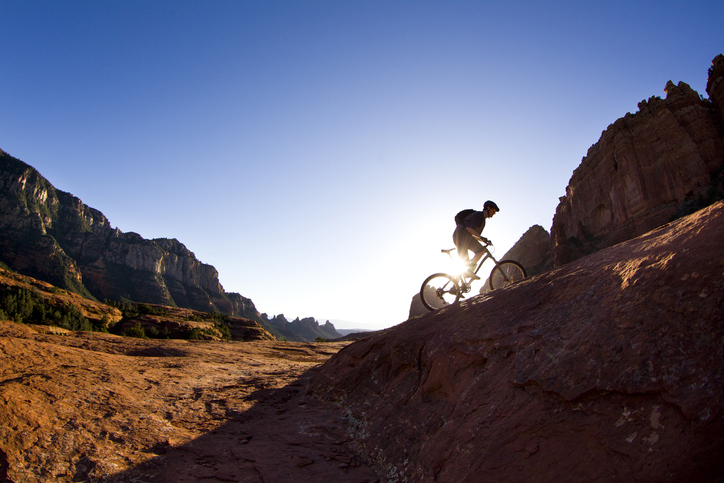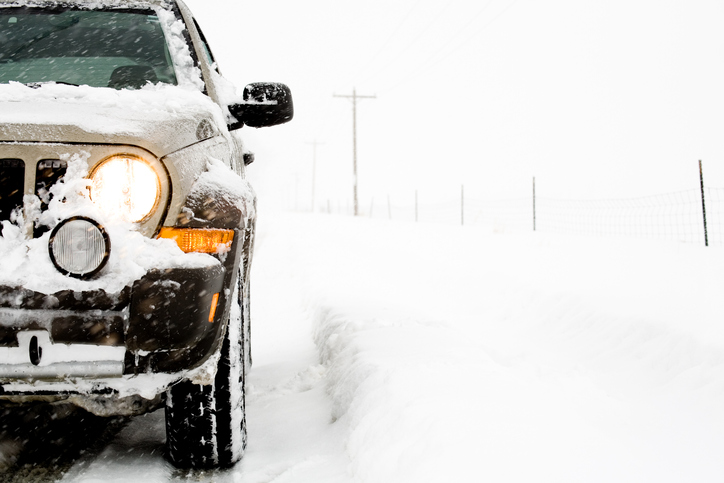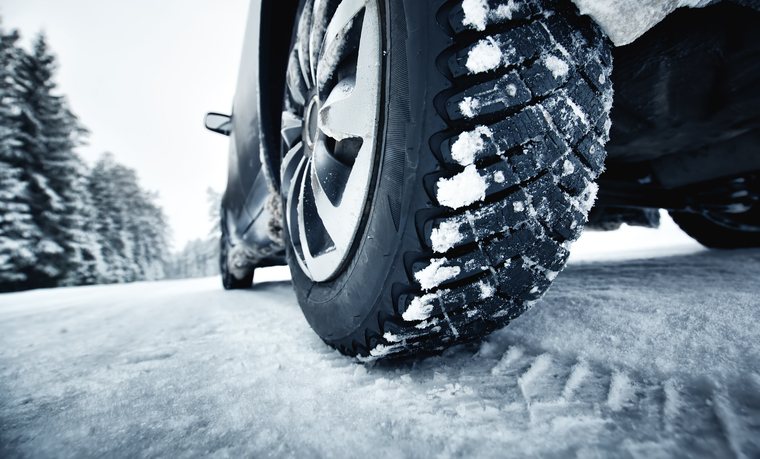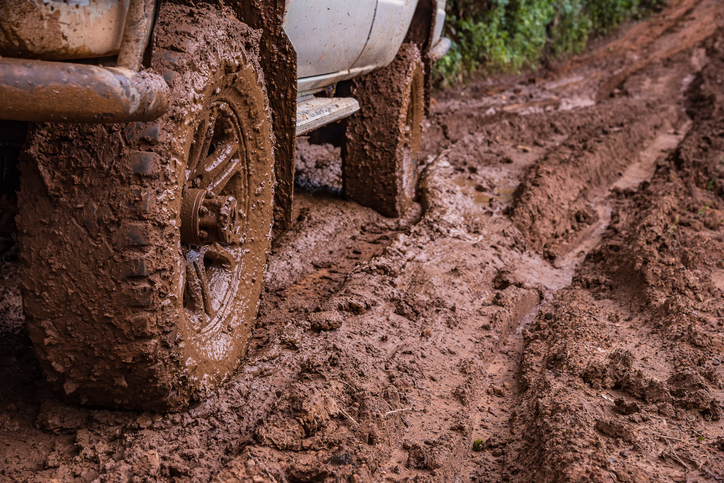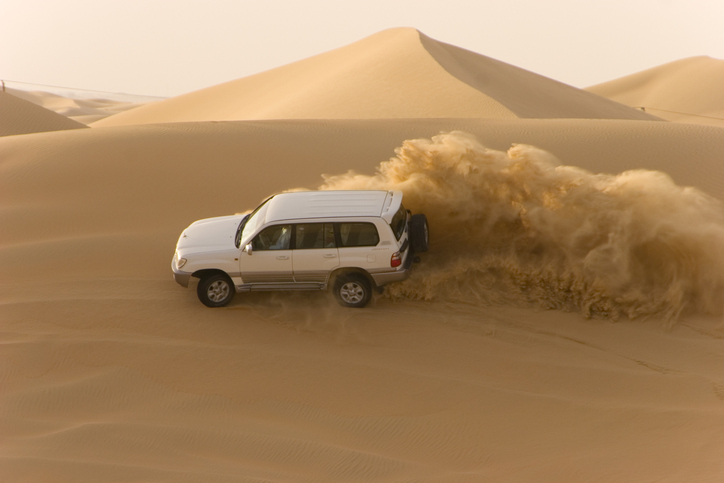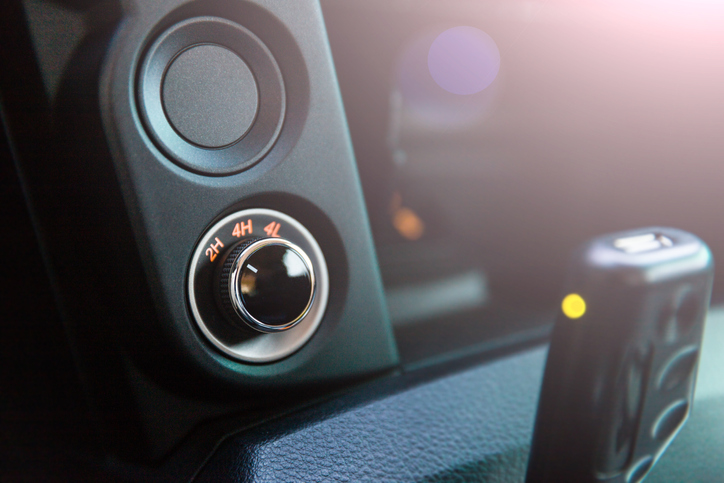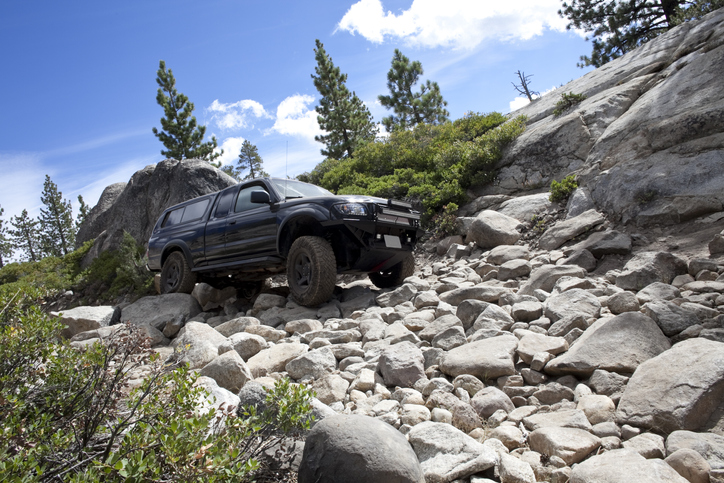photo by MG_54 via iStock
Off-road trucks are complicated things to someone who has never been around them. In most cases, they have an extra lever or additional buttons that other cars do not have.
Furthermore, those levers or buttons are usually stamped with a letter or two, which to most beginners is just utter gibberish (2H, 4H, 4L).
In the latest 4WDs, one may also find a dial that seems to have every possible terrain one could encounter on planet earth – mud, snow, gravel, rocks, ruts, and the list goes on and on.
How can one possibly understand what everything does and when to use it? Well, by doing exactly what you have done – ask Google!
So, in this article, we’ll go over 4wd high vs low, when to use 4wd high, what does 4wd low mean, and many other facts surrounding this subject.
Table of Contents
- What Do All the Letters and Words Mean?
- 4 Low or 4 High in Snow
- 4 High vs 4 Low in Mud
- 4 Low vs 4 High in Sand
- Difference Between 2 High vs 4 High
- Ending the 4 High vs 4 Low Debate
- Recommended Off-Road Gear
What Do All the Letters and Words Mean?
photo by algre via iStock
To talk about 4 high vs 4 low, I think it would be a good idea to first get the strange letters out of the way.
In most cases, trucks are in two-wheel drive high range during normal day to day driving. This means that the truck acts like a normal car with normal gear ratios while spinning the rear two wheels. This setup is the 2H on the lever or dial (depending on how old or new your truck is).
The abbreviation 2H here stands for two-wheel-drive high range.
When the going gets tough, and traction is reduced, it is time to pop the vehicle into four-wheel drive. This setup sends power to all four wheels, helping you overcome slippery terrain while also maintaining the regular day-to-day gear ratios.
photo by JamesBrey via iStock
This setting is designated as 4H for four-wheel drive high range.
Finally, we have 4-wheel drive low range. This setting is used in instances where traction is low or when you need to crawl through obstacles that require you to go very slow to pick your line and avoid damage to the vehicle (or even both of the above combined).
The low gearing also multiplies the torque of the engine, helping the truck overcome obstacles that would otherwise be impossible due to a lack of power. For example, very steep hills, deep mud or snow, deep rivers, or big rocks all call for 4-wheel low. All of these require power. It is the same principle as riding a bike…
photo by GibsonPictures via iStock
Imagine your legs are the engine, and you are riding up a very steep hill while putting down your maximum effort. In a high gear, chances are you will not be able to push the pedals down anymore even when putting in maximum effort.
However, if you shift down to the lowest gear possible, the same amount of force will now turn the pedals far easier. You may be going slower, but you have multiplied the torque your legs transfer to the ground.
The same principle is true in the case of a vehicle with a low-range transmission.
In newer cars, you will also find words like mud, snow, rocks. Those are just different modes that help the traction control system optimize its behavior according to the terrain. It doesn’t have much to do with 4-wheel drive or 2-wheel drive.
4 Low or 4 High in Snow
photo by alptraum via iStock
So, now that we have the basics covered, it is time to enter the discussion of 4 high vs 4 low.
In the instance of snow, the 4 high vs 4 low debate is a bit complicated. You see, snow can be present on a normal road or a trail you happen to be wheeling in.
If there is snow on the road, chances are it isn’t deep because roads get cleaned and salted.
Furthermore, on the road, you need to maintain normal road speeds.
Therefore, in the debate of 4 high vs 4 low, 4 high takes the win when it comes to road driving.
photo by LeManna via iStock
However, you also need to learn to assess the situation. Some snowy trails may not require 4 low if the snow is very little and the trail is easy.
The same is true for snow-covered roads. In rural areas or mountainous regions where roads may not get cleaned as regularly and may also include some steeper climbs, there are instances where you may need to use 4 low. It is rare, but it can happen.
Keep in mind that in 4 low you can use low 3rd, 4th, or 5th gear, which will give you speed and the ability to shift back to 1st or 2nd to get more torque whenever you need to.
So, in the case of snow, the 4 high vs 4 low debate is complicated. There are some baseline rules, but you also need to assess the specific situation you are in.
4 High vs 4 Low in Mud
photo by nuwatphoto via iStock
When it comes to mud, the 4 high vs 4 low debate is easier to answer. Firstly, you won’t find mud on the street (that’s in most countries at least); therefore, there is nothing to back up the use of 4 high.
Mud, in most cases, requires momentum and a lot of wheel speed. This helps flick the mud off the tire tread to avoid packing the tires and turning them into racing slicks.
However, along with the high wheel speed, you also need torque on tap just in case the mud is too thick and your engine doesn’t have the power to push through.
Based on the above, it is safe to say that the most viable option is 4 low. Enter the mud in 2nd or 3rd gear in low range. This will give you the speed you need to push through and keep your tires clear. If you feel the car about to stall, shift back to first.
In the 4 high vs 4 low debate, people many times forget that speed can also be found in low range if the correct gear is selected.
4 Low vs 4 High in Sand
photo by Lingbeek via iStock
Sand is much like mud in that if you lose your speed, you will probably dig down and get bogged.
The choice of 4 high vs 4 low is once again relatively straightforward here.
Let’s imagine you are cruising down a long beach or in a desert. While driving, you should be in 4th or 5th gear low range as this will give you the speed needed to cruise while avoiding getting bogged down.
The reason I am suggesting you are in 4th or 5th gear low range and not in 2nd or 3rd gear high range is setting off from a standstill.
When you stop in the sand, trying to set off again can be tricky. The smooth approach won’t work in 4 high because the engine will stall, or you will be too violent with the throttle to avoid stalling, which will lead to getting bogged.
The best approach here is to slowly set off in 1st or 2nd low and slowly work your way up to 4th or 5th and cruise.
So, once again, in sand driving, the winner of 4 high vs 4 low is 4 low.
Difference Between 2 High vs 4 High
photo by Ran Kyu Park via iStock
To further clarify the description made above, let’s recap the instances in which one would use 2 high or 4 high.
During normal day-to-day driving, 2 high is the choice. This provides less wear on the components of the vehicle and better fuel economy.
When the weather turns bad and roads are snowy, it is time to switch to 4 high. This will use more fuel and will lead to more mechanical wear, but will provide more grip.
The difference between 2 high and 4 high is that the two front wheels that are not getting any power in 2 high are receiving drive in 4 high. It is important to remember that gear ratios stay the same in 4 high and only change in 4 Low.
Ending the 4 High vs 4 Low Debate
photo by initialsphoto via iStock
In most off-road situations, 4 low is the way to go. As you take your vehicle out and get the experience yourself, you will start to realize that it is a straightforward choice. Depending on how the truck behaves, you will automatically switch to the setting required for the situation.
Now that you know the basics, we hope that a full understanding of 4 high vs 4 low will come sooner rather than later.
Remember, if you want to ask any questions regarding this or any other subject, post them in the forum section of our page.
Recommended Off-Road Gear
- Recovery Strap
- Recovery Board
- Winch
- KC Lites
- Shackle Hitch Receiver
- Hi-Lift Jack
- Tire Inflator/Deflator
- Portable Power Station
- First Aid Kit
- GMRS Radio



